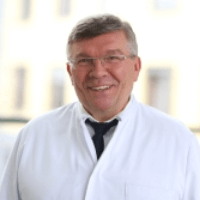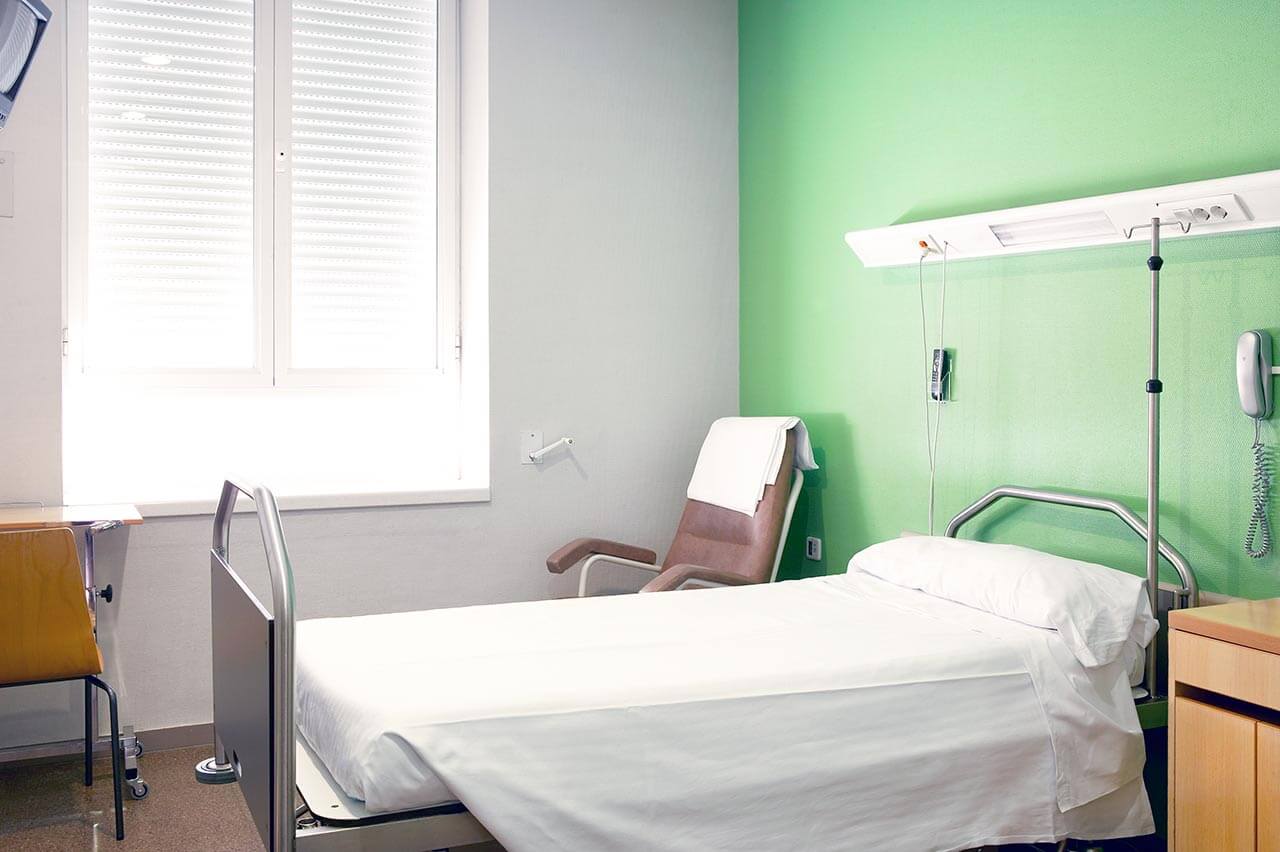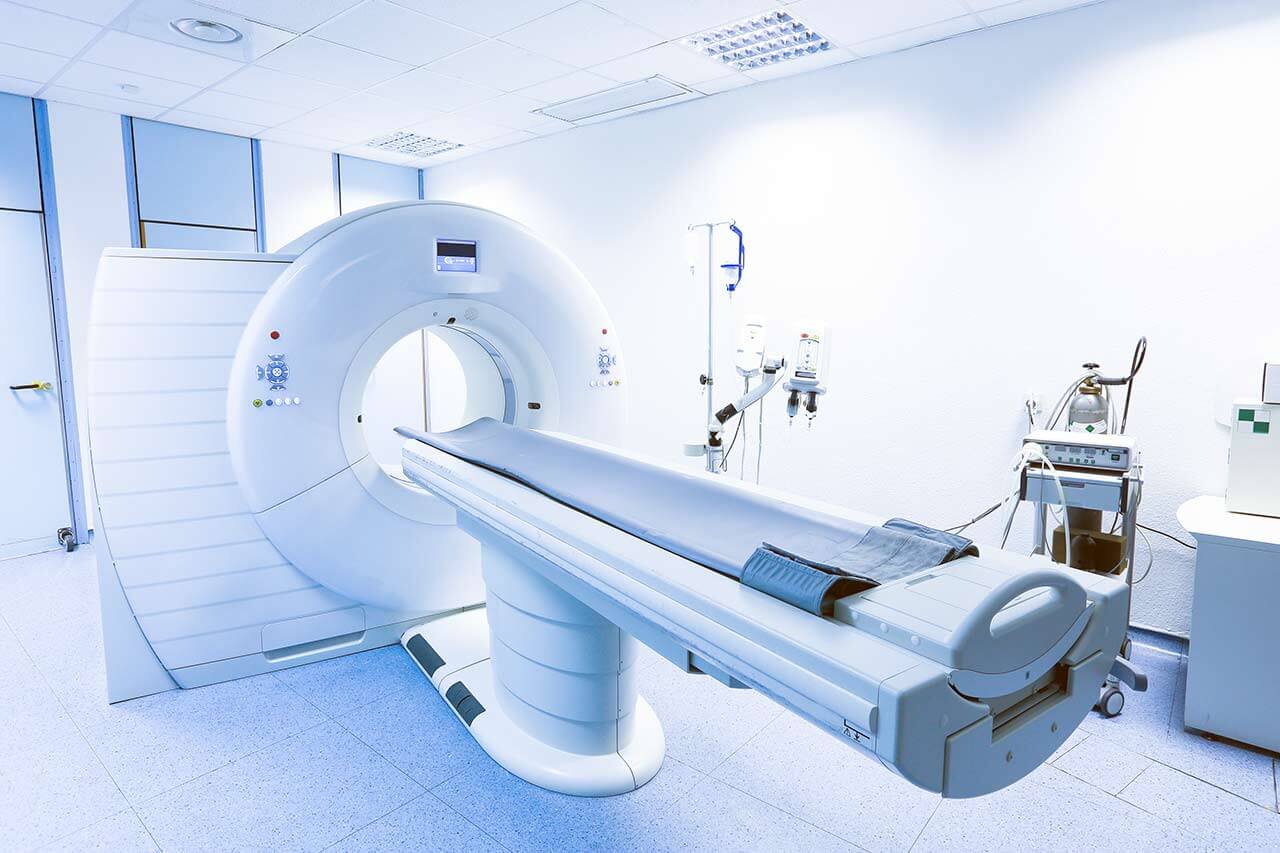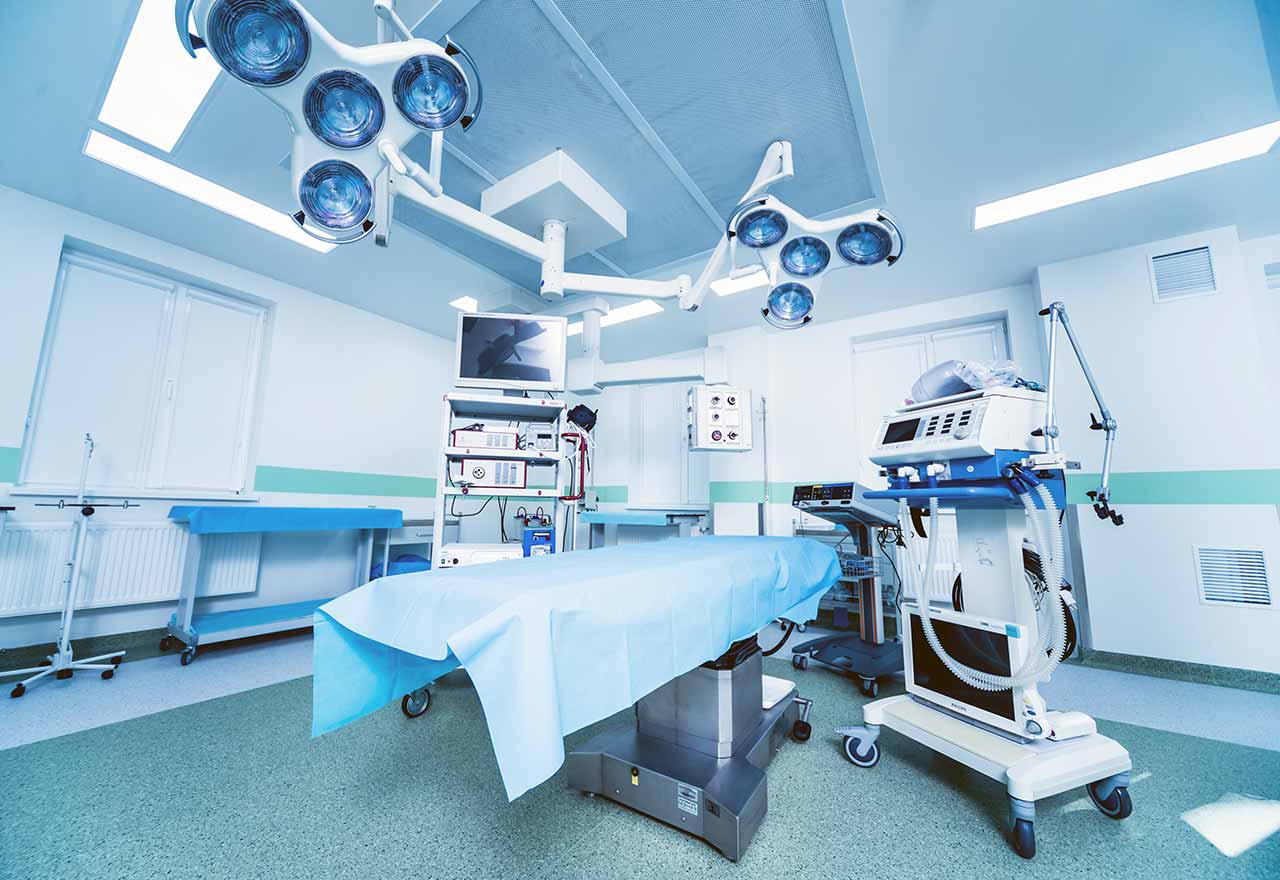
The program includes:
- Initial presentation in the clinic
- case history collection
- general clinical examination
- laboratory tests:
- complete blood count
- biochemical analysis of blood
- indicators of inflammation
- indicators blood coagulation
- ophthalmologic examination:
- ophthalmoscopy
- gonioscopy
- pachymetry
- perimetry (visual field test)
- computerperimetry
- Goldmann-primetry
- fluorescein angiography
- thermography
- capillary microscopy
- testing for optic nerve damage
- tonometry
- intraocular pressure measurement
- preparation according to preoperative standard
- glaucoma treatment with laser iridectomy
- symptomatic treatment
- cost of required medications
- nursing staff services
- elaboration of further recommendations
Required documents
- Medical records
Service
You may also book:
 BookingHealth Price from:
BookingHealth Price from:
About the department
The Department of Adult and Pediatric Ophthalmology at the HELIOS Clinic Krefeld offers the full range of diagnostic and therapeutic services in this medical field. In addition, innovative surgical interventions are performed here. The main activities include the treatment of cataracts, glaucoma, diseases of the retina, vitreous body, cornea, strabismus, plastic and reconstructive surgery of the eyelids and orbit. The department is headed by Prof. Dr. med. Marcus Knorr.
Before any surgery, much attention is paid to a critical analysis of all the benefits and risks of surgery in the light of possible concomitant eye diseases, general health, as well as individual wishes and needs of patients.
One of the most common ophthalmic diseases is cataract. The specialists of the department have a huge experience and show excellent results of treatment of all forms of this disease: congenital cataract, cataract in children, cataract after trauma, etc. The department has high-precision diagnostic methods and offers all modern surgical methods that are absolutely safe and effective. As a rule, operations for cataract treatment are performed on an outpatient basis, under local anesthesia.
Glaucoma is also a fairly common problem. In the initial stages, conservative treatment is possible (special drops that help reduce intraocular pressure and relieve tension in the optic nerve). If conservative treatment does not yield positive results, and the ailment continues to progress, the specialists of the department select the optimal variant of surgical treatment.
The department’s scope of tasks also includes the diagnostics and treatment of various forms of strabismus: congenital and acquired. Here is provided treatment of latent strabismus (heterophoria), which manifests itself only in stressful situations (for example, fatigue, alcohol effects), concomitant strabismus, which usually develops during the first three years of a person's life, and paralytic strabismus, which is a paralysis of the eye muscles due to various causes (diabetes, circulatory disorders, inflammations or traumas).
The range of medical services of the department includes:
Cataract
- Comprehensive diagnostics
- Accurate laser and ultrasound measurements to calculate the size of the lens of the eye
- Use of special lenses (with due consideration of all the advantages and risks)
- Outpatient and inpatient cataract surgery (for example, secondary lens implantation under local or general anesthesia)
- Postoperative monitoring of the healing process
- And other diagnostic and treatment methods
Glaucoma
- Filtering surgery (trabeculectomy)
- Non-perforating glaucoma surgery (viscocanalostomy, canaloplasty)
- Drainage system implantation in secondary glaucoma
- Minimally invasive surgery to treat glaucoma (Trabektom, XEN-Implantat, iStent)
- Treatment of acute and chronic angle-closure glaucoma (peripheral iridectomy)
- Laser therapy (cyclophotocoagulation, selective laser trabeculoplasty)
- Treatment of glaucoma in children and adolescents
- Modern diagnostics of glaucoma
- Heidelberg retinal tomography
- Pachymetry
- Pentacam (rotating Schiempflug camera for computer topography of the cornea and complex examination of the anterior segment of the eyeball)
- Optical coherence tomography (OCT)
- Examination of the field of view (perimetry)
- And other methods of examination
Retinal and vitreous diseases
- Laser therapy
- Administration of drugs into the vitreous body (intravitreal administration) in various diseases of the macula (age-related macular degeneration, diabetic maculopathy, diseases of the macula caused by circulatory disorders, etc.)
- Surgical treatment of all retinal and vitreous diseases (for example, pars plana vitrectomy)
- Reconstructive surgery (for example, after trauma)
- Iris surgery
- Intraocular lense implantation
- Treatment of retinopathy of prematurity
- And other types of treatment
Corneal diseases
- Descemet membrane endothelial keratoplasty (DMEK), "No touch technique".
- Autologous limbal stem cell transplantation (for example, after chemical burns or viral diseases)
- Application of eye drops on the basis of autologous serum
- And other treatment methods
Strabismus
- Diagnosis and treatment of amblyopia
- Diagnosis of ophthalmic diseases in young children
- Diagnosis of congenital ophthalmic diseases
- Diagnosis and surgical treatment of nystagmus
- Diagnosis and laser therapy in retinopathy of prematurity
- Other diagnostic and treatment methods
Plastic and reconstructive surgery of the eyelids and orbit
- Inflammatory changes of the eyelids and orbit
- Correction of the displaced eyelids (entropion, ectropion)
- Transplantation of the mucous membrane in conjunctival contraction
- Surgery to treat ptosis (in adults and children)
- Treatment of benign and malignant eyelid tumors (also reconstructive surgery)
- Cosmetic eyelid surgery (pronounced drooping upper eyelids, bags under the eyes, etc.)
- Correction of congenital eyelid defects
- Surgery to remove orbital tumors
- Elimination of prosthetic problems in anophthalmic, including sebum implants
- Treatment of endocrine ophthalmopathy
- Corrective surgery for the treatment of facial paralysis
- Botox injections (for medical and cosmetic purposes)
- Treatment of lacrimal ducts (in cooperation with the Department of Otolaryngology)
- And other treatment methods
Curriculum vitae
- 1978 - 1984 Study of Medicine at the Westphalian Wilhelm University of Münster.
- 1984 Defense of doctoral dissertation, Internal Medicine.
Professional Career
- 1985 - 1986 University Hospital Zurich, Polyclinic.
- 1987 -1987 University Hospital Münster, Polyclinic.
- 1987 Department of Ophthalmology, University Hospital Tübingen.
- 1992 Medical Specialist in Ophthalmology.
- 1994 Defense of doctoral dissertation, Ophthalmology, Tubingen University.
- 1994 Venia Legendi, Ophthalmology.
- 2000 Visiting Professor, Ophthalmology, Tubingen University.
- 2000 Chief Physician of the Department of Ophthalmology at the Municipal Hospital Krefeld.
- Since 2008 Chief Physician of the Department of Adult and Pediatric Ophthalmology at the HELIOS Clinic Krefeld.
Other Activities and Membership in Professional Societies
- Member of the German Society of Ophthalmology.
- Member of the German Society for Intraocular Lens Implantation.
- Member of the European Society of Cataract and Refractive Surgery.
- Member of the Federation of German Ophthalmic Surgeons.
- Deputy Commissioner of the Advisory Committee on Errors in the Treatment of the Medical Association of the North Rhine.
Photo of the doctor: (c) Helios Klinikum Krefeld
About hospital
Founded in 2014, the HELIOS Clinic Krefeld is one of the most modern medical facilities in Germany today. A team of highly qualified specialists, innovative medical equipment and comfortable accommodation conditions – the clinic has everything to make the treatment run smoothly and efficiently. Having crossed the threshold of the clinic, you will feel the home-like cozy and modern atmosphere. Perhaps you will even forget that you are in the clinic.
As a maximum care medical center, the clinic covers practically all areas of medicine: cardiology, gastroenterology, oncology and hepatology, nephrology, diabetology and rheumatology, general, abdominal and minimally invasive surgery, dermatology and venereology, angiology, cardiac surgery and other medical fields.
Thanks to a continuous fruitful cooperation with the world’s leading universities, research and medical centers, the clinic provides the highest treatment standards.
The doctors of the clinic take up the treatment of the most severe cases, including serious spinal injuries and diseases related to the disorders of the central nervous system. The nursing staff of the clinic regularly undergoes both advanced and special trainings, which contributes to a high-quality, professional patient care at all stages of treatment.
The clinic adheres to a strict quality management system. Not only the patient care, but also the entire treatment process (including monitoring and patient care after the operation) are subject to the quality certification.
Photo: (c) depositphotos
Accommodation in hospital
Patients rooms
The patients of the HELIOS Clinic Krefeld live in comfortable single and double rooms. Each room has a bathroom with a toilet and shower. The room is furnished with a comfortable bed, bedside table, TV, radio and telephone. Each room has access to the Internet, which can be used at extra charge.
The clinic offers an excellent infrastructure: a beautiful park with playgrounds for children, a cafeteria, a chapel, which regularly hosts church services, a prayer room for Muslims, a beauty salon, a shop with a large selection of magazines, drinks and personal hygiene items, an ATM and a large parking lot.
Meals and Menus
The restaurant of the clinic offers three meals a day. For breakfast, lunch and dinner, it serves a large selection of dishes that will please even spoiled gourmets. Every day, the menu features vegetarian and dietary dishes. It is possible to order any dish without leaving the room. In addition, the clinic has a cafeteria where one can always have a cup of aromatic coffee, hot tea or enjoy an exquisite refreshing drink. Also, the cafeteria menu offers many tasty snacks and dishes.
Further details
Standard rooms include:




